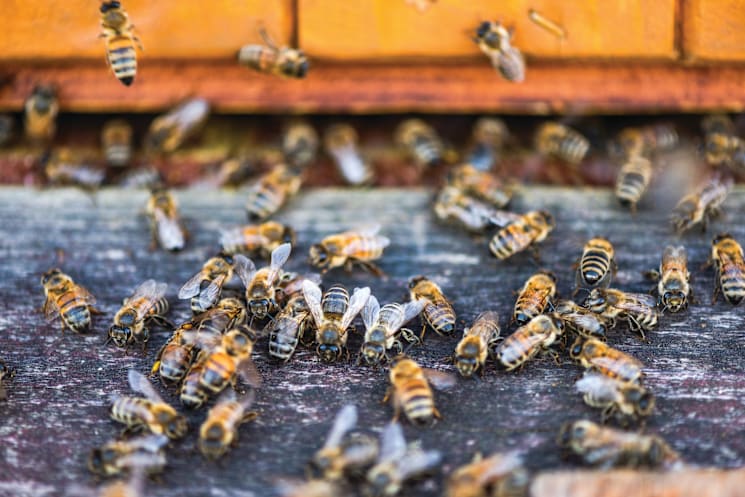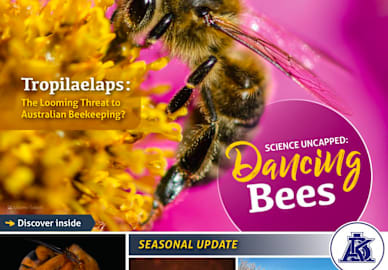This past season has seen a large increase in the numbers of Small hive beetle (Shb) observed within beehives in many areas. There have been many reports of Shb forcing colonies to abscond and the hives taken over and slimed out. This has particularly been the case in the coastal regions and especially where flooding events earlier this year caused the demise of many bee colonies. Quite a few of those flooded colonies were lost and bred up a lot of Shb.
Unfortunately Shb is here to stay and they will be worse in some years (wetter ones) than others. Some areas will have huge Shb loads this season, so be prepared. Being that Shb are so opportunistic they are often going to make the most of an easy target, and amongst the easiest of targets is a weakened bee colony.
Many beekeepers have told me how “hive beetles killed my beehive”. When I ask a few more questions it is clear that many of those hives were not managed properly. The number of brood checks were nil or last undertaken in the previous season, the hive had swarmed “a few months before”, “I had not seen many bees around for a while” or “I am too busy to check every single hive I run”.
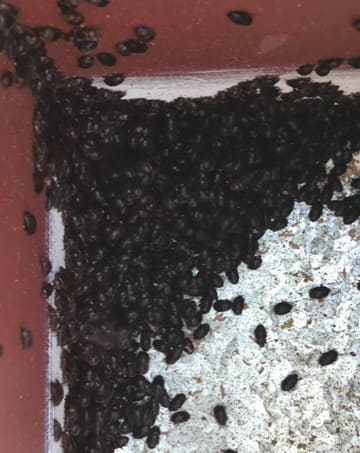
Many of those situations would have been highly preventable if the beekeeper had undertaken an appropriate amount of work on managing their bees. More importantly, they would not have bred up all those extra beetles that then went on to wreak more havoc in other bee colonies.
The main reasons that hives become overrun by beetles often revolves around stress or mismanagement of the hive. If a hive has a high loading of beetles within it then just opening it and pulling it apart (to do brood checks or under-super) can be sufficient enough disruption to give beetles the opportunity they need to later overwhelm a colony and get into the high protein prize contained within the brood frames. Once a colony becomes alarmed then other beetles will sense that and flock to that hive to try and get in on the action too!
When working good hives you will often see large groups of beetles corralled into an area under the hive mat or comb area between boxes or excluder (or in a corner of the box). The bees have worked tirelessly to drive those beetles into that prison, so whilst they are contained, they pose a reduced risk to the colony. The moment the beekeeper disturbs all that hard work and they escape, the beetles immediately become a major risk.
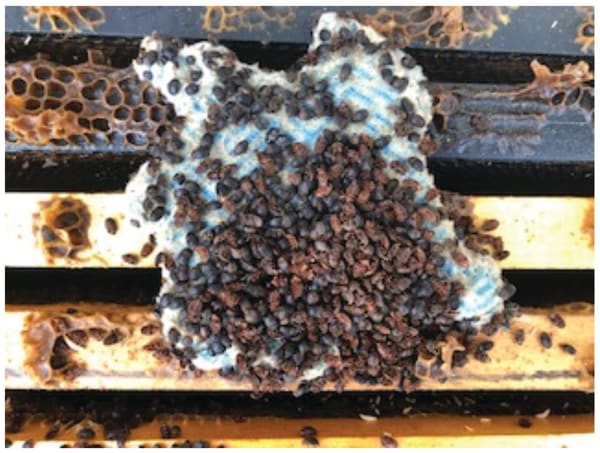
A hive may contain a number of Shb devices or traps that will often not completely control them, and at times, the numbers of Shb can become very high. Whilst the stronger colonies can drive up and control the beetles, weaker colonies are less capable of achieving this, so often the beetles are predominantly situated on the brood combs and causing constant stress and distraction to the colony. They lay eggs and whilst the bees can clean them up it is ok, but as soon as the bees cannot keep up then it becomes a problem.
When experienced beekeepers see lots of beetles in the top box they generally accept that working the hive that day will be counterproductive. If you decide to work it anyway then you risk losing the hive.
The best approach is to add a couple (more) beetle traps around where the beetles are concentrated and just close it back up. If you haven’t disturbed the bees too much then they will very quickly get back to herding the beetles. If you cannot achieve that then removing honey boxes and tightening up the hive may work, but you cannot always justify doing that.
The next day (or next site visit) there could be hundreds of beetles inside each trap, and due to the sheer volume of Shb, many of them may not be dead. It is best to quickly seal those traps into a large Ziploc bag and freeze them to kill any live beetles. If there are still lots of beetles in the hive then add new traps and close up again. If the beetle loading has dropped right off, it may now be safe to work that hive. In ‘beetle country’ it is often the case of balancing what you would like to do with a hive versus what you can/cannot actually do and still keep it alive.
Always remember that if there are lots of beetles around (and you don’t want to risk losing the hive) then the best thing you can often do is not work it until you have thinned the Shb out. That doesn’t mean that you just don’t ever work the hive, it just means you need to deal with the beetles first and then work your bees later.
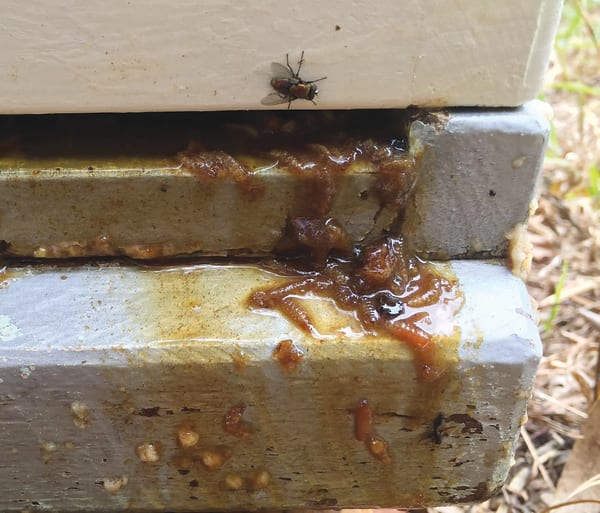
Another way that beekeepers can cause slime-outs is by allowing hives to swarm, then not managing the remaining colony size (adjusting down the amount of extra space/honey for the reduced bee population to adequately protect), not fixing the queen status and subsequently allowing the colony to dwindle. At many steps through the swarming process the colony will be under stress and therefore be very attractive and vulnerable to Shb. Mismanagement of Spring hives and failed recovery from swarming is a major pathway to slime-outs, and breeding up more beetles along the coast as the weather starts to warm up. There is a lot to be said for always having a few queens in your pocket and good nucs on the truck when dealing with the ‘iffy’ hives!
Preventing swarming often prevents a lot of Shb issues, so by keeping your bees strong, and with younger queens, you can reduce the risk. Everybody wants queens in Spring, but many successful beekeepers actually do much of their re-queening work over Summer and depending on their location right through to April (or Winter in far north Queensland). New Year’s queens are unlikely to swarm the next Spring (unless you do everything wrong), so they are an absolute pleasure to manage in Spring when the older queens are wanting to head for the trees.
As well as the beekeeper and hive management related issues causing Shb damage, there is another big one…neglected colonies, which often end up being prime Shb targets as they dwindle.
The even scarier point is that an unknown number of these neglected and “hive beetles killed my beehive” situations probably also involved American foulbrood (AFB) as part of the background story.
For frequently managed bee colonies, most AFB is (hopefully) found when the infection is still relatively new and only a small number of infected cells have shown themselves. For colonies that only get a Spring and Autumn brood check then the infection can often have progressed much further and, at times, the colony has already dwindled severely before being identified as diseased. For the colonies that are neglected and receive even fewer (or no) brood checks then the AFB will run its full course.
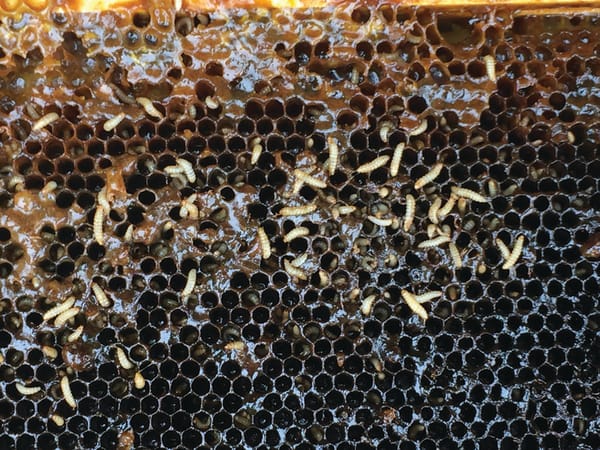
and/or irradiate it.
These unmanaged colonies are a major risk to Shb attack, because as the colony progressively becomes both weakened and stressed by AFB, it will be targeted by both robber bees and Shb, causing a double whammy of AFB to be spread and a big breeding opportunity for Shb. A lot of hives that beekeepers put down as “being killed by Shb” were already infected by AFB, so they were probably first robbed and presented a major biosecurity risk.
Because a slimed-out beehive is often such a horrible mess (and potentially harmful to our health because of the Kodamaea yeast that the slime contains), many beekeepers do not examine the brood frames. In their eyes, “hive beetles killed my beehive” and the story basically stops there. Unfortunately, this mishandling of the equipment often fuels the later re-emergence of AFB infections. Any colony that has experienced AFB is a biosecurity risk and must be treated accordingly, so if you cannot 100% identify and determine what killed your hive, then assume the worst and treat it like it has AFB. Many successful beekeepers irradiate any dead-out colony that they get, just to ensure that they are always on top of their AFB.
I have spoken to quite a few beekeepers who have inspected the brood of slimed beehives and found clear signs of AFB amongst the mess, and often these were operators doing their adequate hive management each season. If a lot of good beekeepers are finding signs of AFB in slime-outs then it is likely that a high percentage of ‘mystery slime-outs’ are also infected with AFB.
If you get a slime-out then the best thing to do is immediately block it up/bag it, freeze it (to kill all stages of Shb inside it), and then decide if you will burn the whole lot or irradiate and clean up the mess later. If you value your time (or pay staff) then often it is actually more cost effective to just burn most of the frames and only keep the good wood gear.
For some beekeepers it is normal to just ‘clean up’ all the dead-outs each time they go to the site (often slime-out or full of wax moth), which indicates that they are not on top of managing their hives. They are allowing the equipment and frames to be contaminated (which costs money to rehabilitate or replace), making it harder to identify the actual cause of hive demise, and also breeding up a lot of beetles and possibly AFB. If you are operating like that then it is time to re-evaluate and work out what you need to change in your process to turn it around. Training your beekeepers to better manage weak colonies is probably a good start. Reducing the hive per beekeeper ratio so you can work hives more frequently is a great move. This improves the general consistency and strength of each colony, which is beneficial and often much more profitable as honey production per hive increases.
As anyone who has had to clean up a slime-out would know, it can be a horrible job (and costs you hard-earned money), so try to prevent it at all costs. I would much rather deal with an AFB hive (at least you can extract the honey), irradiate and reuse it than deal with the slimy mess that the same hive could become a month or two later if it is not dealt with properly. Therefore, make it a priority to do a MINIMUM of two full brood checks each season (if not a few more), manage your queens (don’t keep them any longer than you should), train your beekeepers, manage weak hives, and keep on top of your beetle numbers. That makes a lot more dollars and sense than being one step behind on your beekeeping all the time.
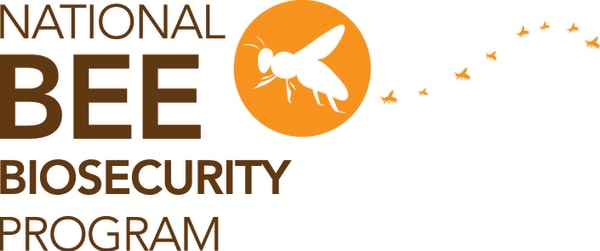
levy, with state governments contributing in-kind resources. Plant Health Australia manage the program on behalf of Australian Honey Bee Industry Council.
The National Bee Biosecurity Program is funded by the honey bee industry through a component of the agricultural honey levy, with state governments contributing in-kind resources. Plant Health Australia manage the program on behalf of Australian Honey Bee Industry Council.
USEFUL INFORMATION for beekeepers
Everything bees can be found here www.dpi.nsw.gov.au/bees
To report AFB and other notifiable bee diseases, neglected hives, bees creating a public nuisance or other bee related biosecurity issues call the Biosecurity Hotline number
1800 680 244 or report online at; https://biosecurity.transactcentral.com/Biosecurity/servlet/SmartForm.html?formCode=report-a-biosecurity
Pesticide poisoning; www.dpi.nsw.gov.au/animals-and-livestock/bees/management/pesticides2/pesticides-reducing-damage-to-honey-bees
To update your beekeeper registration details and hive numbers please email: bfs.admin@dpi.nsw.gov.au or call (02) 6552 3000 (option 1)
Bee Biosecurity BOLT training; www.beeaware.org.au/training/
Submit your interstate health certificates at quarantine@dpi.nsw.gov.au
A Varroa video: www.youtube.com/watch?v=Q3tokmDwQF0
Article by rod bourke Biosecurity Officer, NSW DPI


